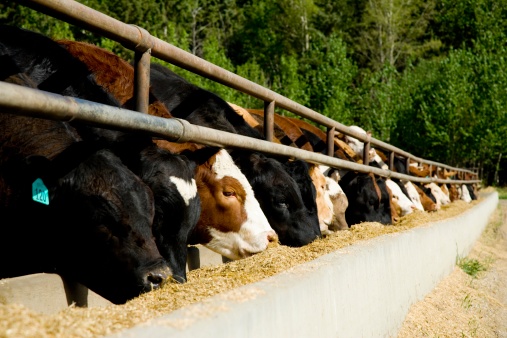
The likelihood that grocery store prices will follow the commodity prices down, though, is reasonably remote. For one thing, retail prices do not change as fast for food as they do with other commodities like gasoline. For another, the big increases in retail food prices have come in beef, pork, chicken and fresh fruits and vegetables, not in grains.
Meat prices are not likely to fall much in the near term as pork producers continue to battle a bacterial disease that is killing piglets and beef producers try to build up the herds they culled a couple of years ago when beef prices were low. Prices for chicken have risen as consumers look for ways to reduce their grocery bill by buying lower priced poultry, driving up demand for chicken and raising prices.
The most significant driver of higher food prices is the continuing drought in California, which produces nearly half of all U.S. fresh fruits and vegetables. The state also produces a significant portion of the nation’s beef and eggs. Prices for fresh fruits and vegetables could rise by 3% this year, with beef rising 6% and eggs up 5% due to the drought. Rice could rise as much as 20%, according to one estimate.
Higher fuel prices also figure into the rising cost of food, to say nothing of the impact of higher gasoline prices on consumer budgets. Some relief from rising gas prices may be on the way, however. The national average price per gallon has fallen nearly three cents in the past week, though it still remains about 17 cents a gallon higher than it was a year ago.
ALSO READ: Ten States With the Slowest Growing Economies
Are You Still Paying With a Debit Card?
The average American spends $17,274 on debit cards a year, and it’s a HUGE mistake. First, debit cards don’t have the same fraud protections as credit cards. Once your money is gone, it’s gone. But more importantly you can actually get something back from this spending every time you swipe.
Issuers are handing out wild bonuses right now. With some you can earn up to 5% back on every purchase. That’s like getting a 5% discount on everything you buy!
Our top pick is kind of hard to imagine. Not only does it pay up to 5% back, it also includes a $200 cash back reward in the first six months, a 0% intro APR, and…. $0 annual fee. It’s quite literally free money for any one that uses a card regularly. Click here to learn more!
Flywheel Publishing has partnered with CardRatings to provide coverage of credit card products. Flywheel Publishing and CardRatings may receive a commission from card issuers.
Thank you for reading! Have some feedback for us?
Contact the 24/7 Wall St. editorial team.


